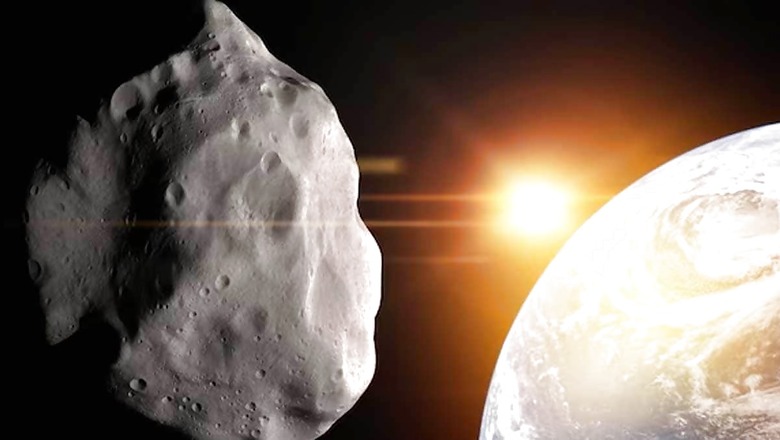
views
A 110-foot asteroid, roughly the size of an airplane, is expected to make a close approach to the Earth on Saturday, August 3, at a distance of approximately 4,450,000 miles (about 7,160,000 kms).
The asteroid, named 2024 OJ2, is travelling at a remarkable speed of about 37,510 kilometres per hour (or 23,305 miles per hour), according to reports.
However, it is not considered dangerous given its size and distance from the planet. This comes after two two huge asteroids passed close to Earth on August 1.
As per the Jet Propulsion Laboratory of NASA, the two asteroids — known as 2024 OE and 2024 OO — posed no imminent threat to the planet and passed by safely. This passage is viewed by scientists and researchers as a valuable chance for scientific observation. They are said to be 190 and 88 feet in diameter.
Often asteroids come close to the Earth, with smaller ones like 2024 OJ2 being more prevalent than those in larger shapes. Even though this asteroid poses no imminent threat, scientists are attentively monitoring it to gain a better understanding of near-Earth objects (NEO).
What Are Asteroids?
Minor planets that orbit the inner solar system are known as asteroids. These are 4.6 billion-year-old leftovers of the early solar system that lack atmospheres. To predict asteroid routes, scientists utilise a combination of observations, mathematical modelling and modern technologies.
Stray asteroids and pieces have impacted the Earth, causing profound geological changes, besides influencing the evolution of life. A popular example is the Chicxulub impact event, which occurred approximately 66 million years ago and led to the mass extinction of dinosaurs.
Ceres, Vesta, and Pallas are examples of famous asteroids in our solar system, each with its size, composition, and orbit. NASA and other space agencies investigate asteroids to assess potential risks to the Earth. They want to identify potentially harmful asteroids by observing their movements.
In July this year, scientists at a Southern California laboratory tracked two asteroids that were scheduled to pass by the Earth. One had a small moon orbiting it, and the other was identified barely 13 days before its closest approach to the Earth.
Neither of them presented any threat, but such asteroids provide practice for planetary defence. These occurrences also provide further information about asteroids, including their sizes, spin, surface features, and critical information regarding their composition and genesis.



















Comments
0 comment